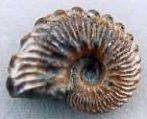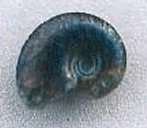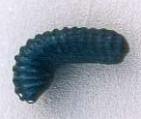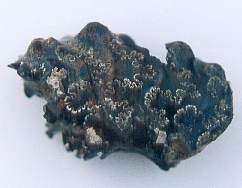


AMMONITESPART OF KIDS ARK |
 |
 |
 |
| The ammonite Euhoplites |
The ammonite Anahoplites |
The uncoiled ammonite Hamites
|
COMING UP
|
WHAT DID A LIVE AMMONITE LOOK LIKELooking at an ammonite, you might think looking at them that the animal that lived in the shell was like a snail, but you would be wrong. In fact ammonites were related to the present-day octopus and squid. In most ammonite fossils we only have the hard shell, but occasionally we get the softer parts of the body and these show that ammonites had tentacles and a tube through which they probably blew water to propel themselves along.Ammonites vary considerably in size. Some are the size of a small coin, others are as big as a tyre. You can find some enormous ammonites on the beaches on the Isle of Wight. |
 |
Part of an ammonite found at Folkestone, Kent. Inside
the shell were chambers which would have been full of gas to keep the
ammonite upright and buoyant. In the picture you can see the frilly lines
of the chambers. These are called suture lines and different ammonites
have different suture line patterns. |
WHEN DID THE AMMONITES LIVE?Ammonites were most common during the Mesozoic period 248 - 65 million years ago. They became extinct 65 million years ago. However a relative of theirs, the nautilus, still survives. |
AMMONITES IN FOLKTALESThe word ammonite comes from the Greek word for ramshorn, "ammon". Before people understood what fossils were, there were folktales about them. In Wales it was said that snakes were stopping people coming to see St Keyne so she turned them into stone. At Whitby in Yorkshire it was St Hilda who got rid of the snakes - this time by driving them off a cliff and cutting off their heads. In both cases ammonites are said to be the remains of the snakes. |
GOOD PLACES TO FIND AMMONITESYou can collect ammonites can be done in many places in Great Britain and abroad. Here are a few places to try:
If you are going on holiday to France, you might like to check out the beaches at Dives-sur-Mer in Normandy. |
|
|